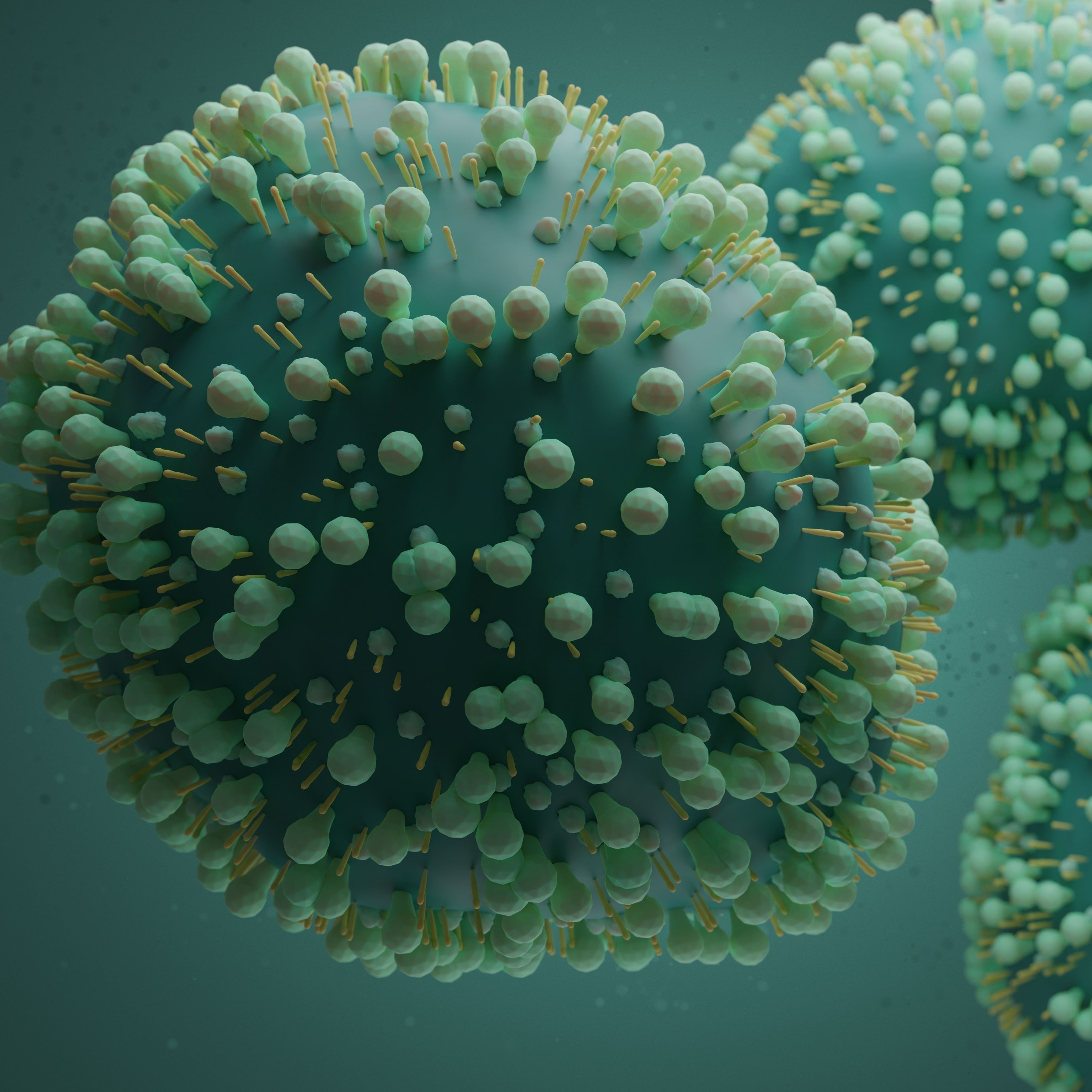
What are Pneumoviridae?
The human orthopneumovirus also belongs to the Pneumoviridae family . This is still known under the old name Respiratory Syncytial Virus, RSV for short. RSV attacks and infects the epithelial cells in the respiratory tract and causes pneumonia, bronchiolitis and rhinitis. The virus is found throughout the world, is highly contagious and is particularly seasonal in the winter months . A particularly high risk of nosocomial infections is mainly in infant wards. Epidemics can occur in infants and babies . Children from the age of 3 have a certain immunity, since a 100% seroconversion is present .
How are pneumoviridae transmitted?
The Pneumoviridae are highly infectious. Anyone who becomes infected with the viruses can already infect other people within a day afterwards. This means that you are contagious even before the first symptoms appear. As a rule, an infected person is contagious for about three to eight days. However, newborns, premature babies or people who suffer from a weakened immune system can be infectious for up to several weeks. In individual cases, this can even be the case for months.
The infection routes for the RS virus, which belongs to the Pneumoviridae, are via infectious secretion droplets or via contaminated surfaces:
- Droplet infection: By speaking, coughing or sneezing, tiny saliva droplets containing the virus are released into the environment . If these viruses get into the nasal mucosa or onto the eyelids of healthy people, the probability that they will also become ill is quite high.
- Smear infection: Smear infection is also a possible transmission route for pneumoviridae . For example, this happens via contaminated clothing and toys. According to experts, penumoviridae, including RSV, can survive on hands for about 20 minutes and on towels for up to 45 minutes. On plastic surfaces, the viruses can even stay alive for several hours at .
What is the incubation period for Pneumoviridae?
The incubation period, i.e. the time between infection and the onset of symptoms, is about two to eight days. On average, the first symptoms and complaints appear after five days after infection.
What are the symptoms of pneuomoviridae?
The symptoms of an infection with Pneumoviridae vary from patient to patient. In adults, RSV infection causes no to hardly any symptoms. In other cases, the following symptoms often occur:
- dry cough,
- Rhinitis,
- Sneezing,
- Sore throat.
In infants and small children, on the other hand, an RSV infection is usually more severe and shows the following symptoms:
- high fever,
- audible wheezing and rales when breathing,
- accelerated breathing,
- Coughing with sputum,
- labored breathing and the onset of respiratory distress,
- Shortness of breath,
- cold, dry and pale skin,
- Blue discolouration of the mucous membranes and skin, as a result of oxygen deficiency,
- in children under 18 months, a sunken fontanel.
General
signs of illness such as feeling ill, tiredness, lack of strength, refusal to drink and lack of appetite can also occur.
Overall, it can be said that bronchiolitis caused by
RSV viruses, i.e. Pneumoviridae, is very reminiscent of
whooping cough.
How are Pneumoviridae diagnosed?
If the child shows flu-like signs of illness and suffers from high fever and shortness of breath, a paediatrician must be consulted. An infection with RS viruses can lead to life-threatening courses of disease within a few hours.
For a doctor, an RSV infection is not easy to distinguish from other flu infections. The first thing the doctor will do is take a medical history. The following questions can be asked :
- How long have the symptoms been present?
- Does your child have a high fever?
- Has your child had difficulty breathing?
- Does the child eat and drink enough?
- Does the child have an underlying disease such as cystic fibrosis or a heart defect?
After
the medical history has been taken, the doctor will examine the person thoroughly
. He or she will shine a light into the ears and mouth
to see if there is any redness in the ears or throat
. He will palpate the lymph nodes in the neck for possible swellings
and listen to the lungs. In the case of bronchiolitis caused by
RS viruses, a wheezing and crackling sound is often heard in the
stethoscope. The doctor will also check the lips and
fingernails for blue colouration. This can be a sign
that the patient is not getting enough oxygen.
With the help of a nasopharyngeal swab, RS viruses can be detected without a doubt in the laboratory
. Only rarely is an antibody test possible in the
blood. This is because the body develops very few
antibodies against Pneumoviridae.
How are Pneumoviridae treated?
At of an infection with the RS virus, symptomatic therapy is used . The following measures can have a supportive effect:
- The affected person should drink plenty of fluids. This helps them to cough up the mucus in the airways.
- The upper body should be elevated to make breathing easier.
- Nose drops or nasal irrigation can help to moisten and flush out the nasal cavity.
- Inhalation can help with symptoms such as a cold and cough.
- If the fever is high , calf wraps and stomach compresses can be used to lower the temperature . Dressing the child more lightly can also support this.
- After consulting the doctor, paracetamol suppositories can be given to lower the fever and relieve the pain.
- In some cases, the paediatrician may prescribe medication to dilate the bronchial tubes. This can be very helpful for breathing .
- In severe cases, if the child is in danger of suffocating or there is dehydration due to insufficient fluid intake, a child must be treated in hospital.
